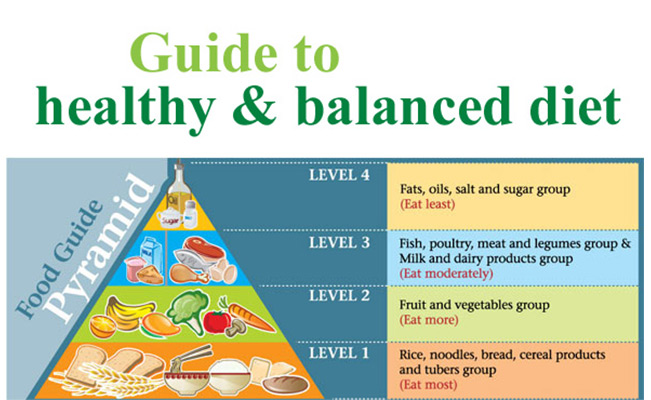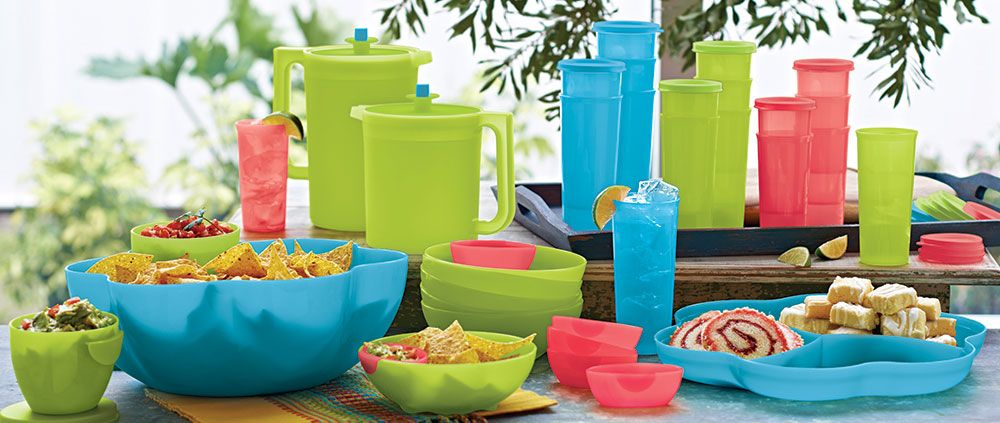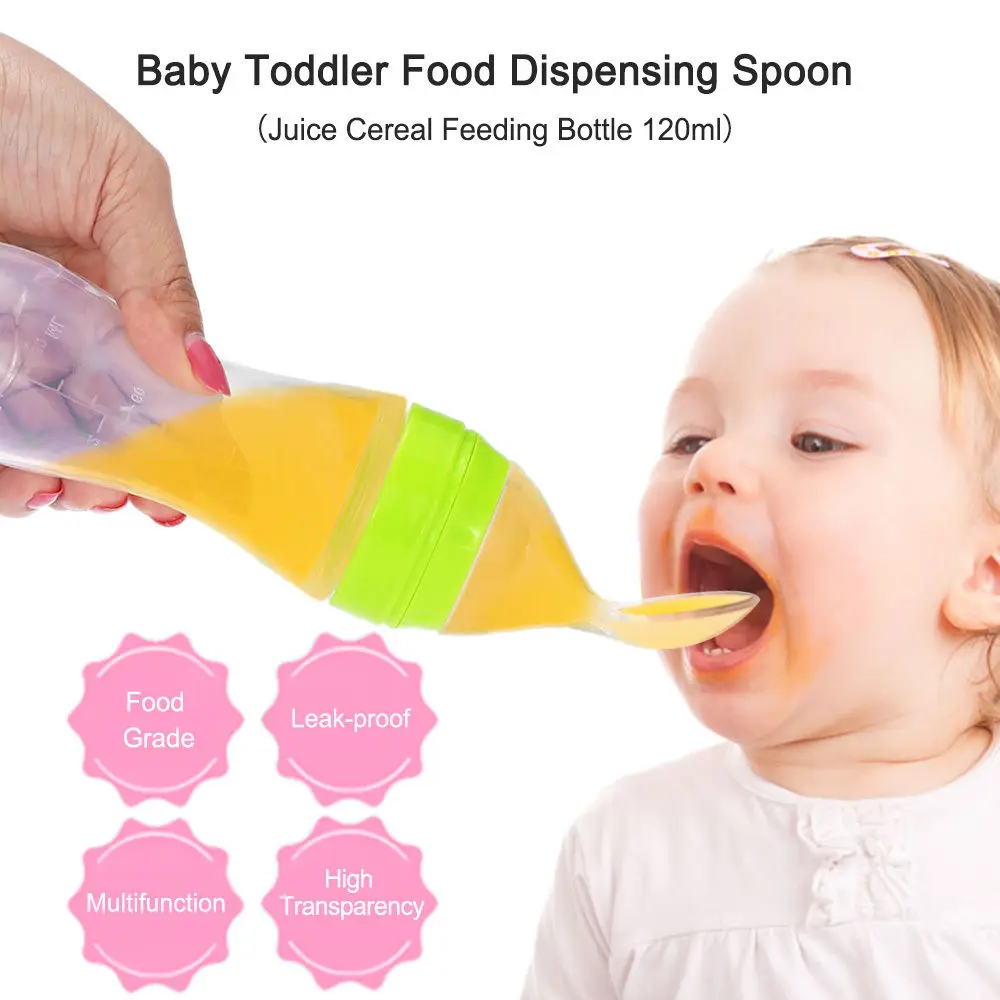Baby feeding must haves
The 10 Most Helpful Baby Feeding Essentials
It may be hard to imagine, when your baby seems so new, but starting solids happens in the blink of an eye. It’s one of the most fun (and messy!) milestones over your baby’s first year. And like any great journey, the adventure into ‘first solids’ begins with good preparation. This means
finding the right gear. To help you prepare, Mega babies has rounded up the ten most useful baby feeding products.
When to Start Solid Foods
Every baby grows and develops at their own rate. But the American Academy of Pediatrics (AAP) recommends babies be introduced to food other than breast milk or infant formula when they are about six months old. They discourage introducing solids before four months of age because babies don’t yet have the neuromuscular development for solids. In addition, feeding an infant solids too early may increase the risk of choking, food allergies, gastric discomfort and obesity later in life. Here are a few signs to look for to see if your child is developmentally ready for solids. Your baby:
- Can hold up their head and neck
- Can sit up alone or with support
- Can open their mouth when food is offered
- Can swallow food rather than push it out onto their chin ● Can bring objects to the mouth
- Can try to grasp small objects
- Has roughly doubled their birth weight
For good measure, before starting solids, read up on these recommendations by the CDC about what, when and how to introduce solid foods and get the go-ahead from your pediatrician. Talk about any questions or concerns you may have.
10 Best Baby Feeding Supplies
1. High Chair
A high chair is a safe spot for your baby to sit during mealtime. Your baby is ready to sit in a high chair when they can sit up unassisted (usually at around five or six months old). As you consider which high chair to purchase, consider your budget and how much space you have available, as there are countless sizes and styles to choose from. Mega babies recommends choosing one that’s easy to clean (detachable tray!), with foldability and durability, especially if you plan on having more children. One of our bestsellers is the Inglesina Gusto Highchair.
Mega babies recommends choosing one that’s easy to clean (detachable tray!), with foldability and durability, especially if you plan on having more children. One of our bestsellers is the Inglesina Gusto Highchair.
2. Booster Chair
If space is an issue, you can invest in a clip-on chair or booster seat. Clip-on chairs can hang on the edge of a sturdy table or kitchen counter. Since boosters are portable, many families purchase one for travel and dining out. Check out the top-rated, best-selling Inglesina Fast Table Chair. This booster goes together with the Inglesina Fast Dining Tray Plus.
Bombol Pop-Up Booster
When grandma prefers your booster to be totally out of sight when not in use, go for the Bombol Pop-Up Booster. This award-winning portable booster folds flat to the size of a book and weighs only 34 ounces. At feeding time, it pops open to become a sturdy, comfy seat. It fits almost all chair designs and is the perfect size for storing in a drawer or carrying in a bag.
3. Bibs
Starting solids means things are about to get messy! There are soft cotton bibs and waterproof bibs. The soft bibs are great for finger foods, and for gently wiping your baby’s face while they’re eating, while the waterproof bibs are most suitable for foods with liquid, which are likely to seep through to their clothes.
How many bibs do you need for your baby?
Because soft bibs are one-per-feeding, most moms like to have three to seven bibs on hand each day. You’ll need to decide how many to get based on how often you’re likely to launder them every day. A plastic or silicone waterproof bib just needs a quick rinse between feedings so you’ll only need one or two in rotation.
Check out these extra-long leopard bibs from cotton material backed with terry lining.
4. Bowls and Plates
You’ll want to have at least two baby-sized serving bowls available during meals in anticipation of spillage and your picky eater wanting other options. Mega babies recommends getting sturdy, non-breakable bowls, and suction bowls and plates are helpful in reducing the amount of food that lands on the floor.
Mega babies recommends getting sturdy, non-breakable bowls, and suction bowls and plates are helpful in reducing the amount of food that lands on the floor.
The best way to make sure that your baby gets at least some food is for both of you to have a plate and spoon. While your baby enjoys the developmental benefits of self-feeding, you will also be calm knowing that something has gone in their mouth too. This is a super-cute silicone chicken-shaped divided plate with suction.
5. Baby Spoon
Before finger foods, most parents start their babies on pureed food. Adult-size spoons are too large for a baby’s mouth, so you’ll need to invest in at least two or three baby spoons for feeding. Mega babies recommends small, soft, flexible spoons for the start. These prevent babies from gagging. Brightly colored spoons are great for getting your baby excited and interested.
These soft, flexible silicone spoons come in bright colors and have a unique, flat edge for easy scooping.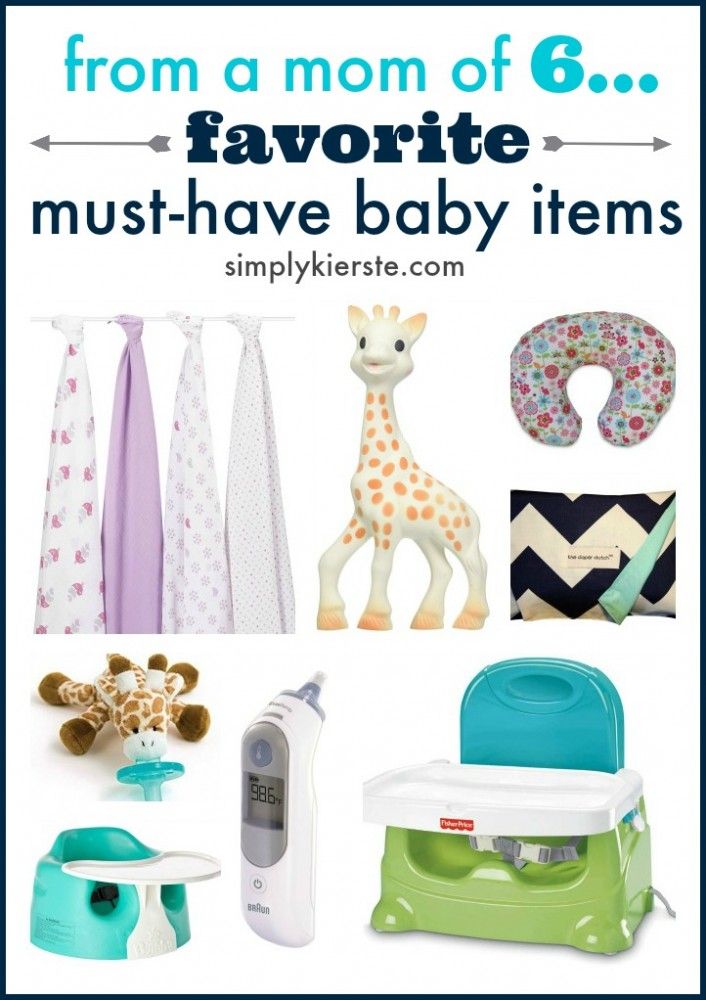
Portable Food Spoon
An all-in-one spoon and food container is a great idea for when you and baby are out and about. The easy-to-fill bulb holds up to 3 ounces of baby food and attaches firmly to the spoon end. You can simply squeeze the bulb to dispense just the right amount of food for each bite. This feeding tool is great for when you’ve got your hands full with shopping bags, as it makes one-handed feeding a snap.
6. Storage Containers
Spill-proof storage containers are a must-have for babies on solids. They can organize and dispense anything from snacks, to formula, yogurt, fruit and more. These Innobaby Packin’ Smart Stackable Storage System features 3-tier stackable containers that are a perfect solution for taking your baby’s food on the go.
Your baby’s eating habits may be erratic at first, so it’s also helpful to use bowls that double as storage containers for uneaten food. Check out this 3-pack Innobaby Preppin' SMART EZ Lock Glass Containers with 4-snap leak-proof lids.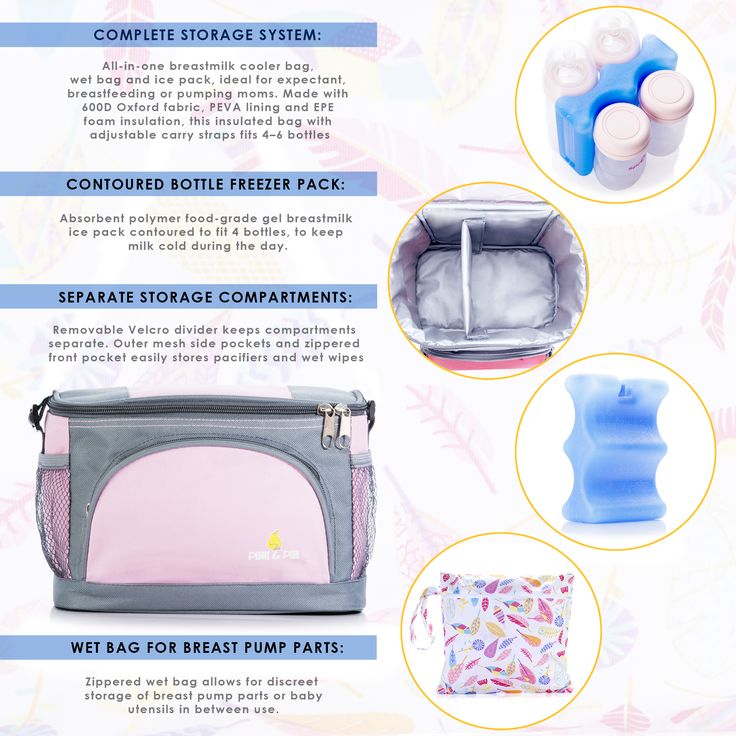
7. Sippy Cup
Your baby probably won't be able to hold a cup or drink solo without spilling until after age one, but why not let them start practicing earlier? The ideal time to introduce a transitional sippy cup, whether with a straw, spouted, or spoutless, is typically around 6 months old, when they start solids. Here are some great tips for making an easy transition to the sippy cup. Mega babies recommends looking for a spill-proof cup that has a rim or straw designed for normal muscle development in a baby’s mouth. You may need to experiment with different cups to see what works best for your baby. Most moms like to have three to six sippy cups in circulation.
8. Splash Mat
Eating solids is a dirty business. If your baby is eating purées, you’ll no doubt have a sticky mess on your baby’s bib, hands, face, high chair and…floor. A splash mat is a mat for protecting the floor under your baby’s high chair. It can help with hard-to-clean puddles. The splash mat is waterproof and just needs to be rinsed under water in between feedings, making for an easy clean-up. One splash mat is usually sufficient for your home.
The splash mat is waterproof and just needs to be rinsed under water in between feedings, making for an easy clean-up. One splash mat is usually sufficient for your home.
9. Baby Food Steamer and Blender
Making purées for your baby is easy for even the most inexperienced home chefs. A double boiler and immersion blender or fork work well for little meals. But if you’re planning on making batches of purées (to be stored and frozen), you may want to invest in a food steamer and blender-in-one. A popular countertop solution called Beaba’s Babycook steams, blends, defrosts and reheats food for a truly convenient cooking experience.
10. Freezer Trays
Making your own baby food is quick, easy and cheap. If you’re getting ahead of the game by cooking up an entire batch, you’ll need to freeze individual portions in trays. This will be a lifesaver, as you’ll be able to defrost only the portion you need ahead of feeding time. Parents love ice cube trays with silicon underneath to help pop out food cubes most efficiently.
Best Baby Gear for Feeding? Relax and Experiment!
You’ve reached this awesome milestone. To make it a more enjoyable experience, it’s best to just go with the flow and let go of any expectations you have for your baby. Eating solids for the first time is a learning process. So, give your baby the space and time to experiment and expect them to have their likes and dislikes. And because eating is a sensory experience, remember that babies aren’t just tasting new foods, they’re mushing their hands in new foods. Expect the process to be GRIMEY. When it comes to baby feeding gear, be patient, embrace experimentation and observe your own likes and dislikes. With the right attitude, you’re in for an exciting and delicious ride! Bon appétit!
8 Must-Have Items When Your Baby Starts Solids
Mastering a proper breastfeeding or formula schedule is a feat for many new parents. But don’t get too comfortable yet – your little bundle of happiness will be ready for solid foods soon.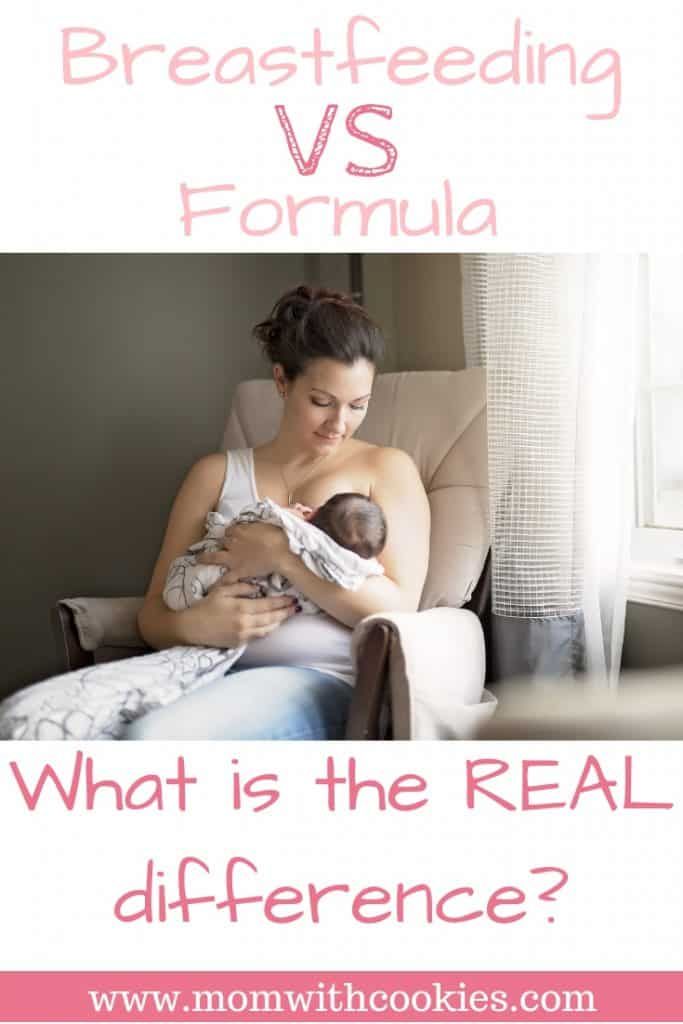
The American Academy of Pediatrics recommends that babies should be exclusively breastfed until the age of six months. However, most babies are ready for solid foods between four and six months.
If you choose to go the baby-led weaning route, you can skip purées and let your baby explore finger foods. This can make mealtimes fun as they discover a whole new world of aroma, taste, color, and texture for a variety of foods. Not to mention that baby-led weaning provides excellent opportunities for fine-tuning motor development.
Hints That Your Baby is Ready to Start Solids
Unsure when to start your baby on solids? As your baby grows older, they’ll require supplementary food sources of iron and other essential nutrients for development.
In addition to age, these are some signs that your baby is ready for more than just breast milk or formula:
-
Does your baby reach out for your food or show interest in what you’re eating?
-
Can your baby sit upright with support?
-
Can your baby hold their head in an upright, steady position?
-
Does your baby open their mouth when you playfully point your food in their direction?
-
Is your baby mouthing toys?
If your baby checks these questions, then you can supplement their liquid diet and start them on solids. It is not recommended to start your baby on solids before four months because of several health risks you’ll be exposing them to.
It is not recommended to start your baby on solids before four months because of several health risks you’ll be exposing them to.
However, if your baby is yet to start solids at seven months and baby-led weaning does not work, it’s time to seek a pediatrician’s opinion.
Common Issues Parents Face During Mealtime
In the first couple weeks of making the transition to solid foods, you may feel a little nervous and challenging, from trying to make sure they don’t choke to dealing with the inevitable mess, as they discover different food and practice their fine motor skills:
-
Messy meals: Of course, mealtimes for babies are expected to be messy. However, you’ll be risking serious chaos if you start your baby on solids without adequate preparation.
-
Discomfort to the child: Stuffy bibs, utensils that are too soft/too big can cause discomfort and cause your baby to lose interest when practicing baby-led weaning.

-
Frustration for parents: Starting your baby on solids is a daunting endeavour by itself. It's not just your baby, but you’ll also go through the same experience after a few “unsuccessful” attempts.
However, it is important to remember to not get discouraged by all of the above, as like anything else, it is a learning process and your baby will learn to get better at grabbing and eating. Also, when encouraged the right way, mealtime will even become one of their favorite activities that they look forward to!
Having the right expectations and having the right items to prepare for mealtime often goes a long way in setting up a fun and enjoyable mealtime for your baby.
8 Mealtime Must-Haves When Your Baby Starts Solids
Now that your baby is ready to start solids, you should ensure that you have all the essentials to make this transition as easy as possible. Introducing solid foods can be a daunting experience, especially if you are a first-time parent.
We’ve selected some absolute must-haves to make mealtimes fun for your tot and less of a mess for you. These carefully handpicked items will also encourage baby-led weaning, self-feeding, and hone infant motor coordination.
1. A Comfortable High Chair or Booster
You are already familiar with messy mealtimes for babies. Now, get ready for more amusing chaos once your baby starts solids. Highchairs offer convenience and comfort that make mealtimes more pleasant for you and your baby.
Aside from a latching tray, highchairs also come with handy features like child safety restraints, a comfortable seating pad, and storage space. Newer models are designed to accommodate your infant’s size as they grow. Some of these have security features like lockable wheels and straps as well.
ANTILOP highchair by IKEA ($19.99)
The IKEA ANTILOP highchair is one of the most popular ones out there because it's very well-built and extremely affordable ($19. 99).
99).
Adjustable footrests from Yeah Baby Goods ($31.96)
Also, make sure you get an adjustable footrest to support your child’s feet from Yeah Baby Goods (they also have some adorable highchair accessories including leg wraps to customize further)
At six months, your baby is becoming more receptive to their environment. A highchair or booster seat encourages inclusion in family activities, such as family mealtimes.
2. Easy-to-Clean Bibs
Using bibs at feeding time protects your baby’s adorable outfit and saves you the stress of changing their clothes after every meal.
Silicone bib by Nightingale ($13.99)
With 100% waterproofsilicone bibs, you can keep oily foods from ending up on your baby’s arms or laps. Of the different bib types, silicone bibs are the favored choice because of how easy to clean they are and how effectively they catch crumbs and spillage.
This handy mealtime helper rests comfortably on your baby’s shoulders and has easily adjustable straps that can be fastened with one hand – a useful feature for when one of your hands is occupied.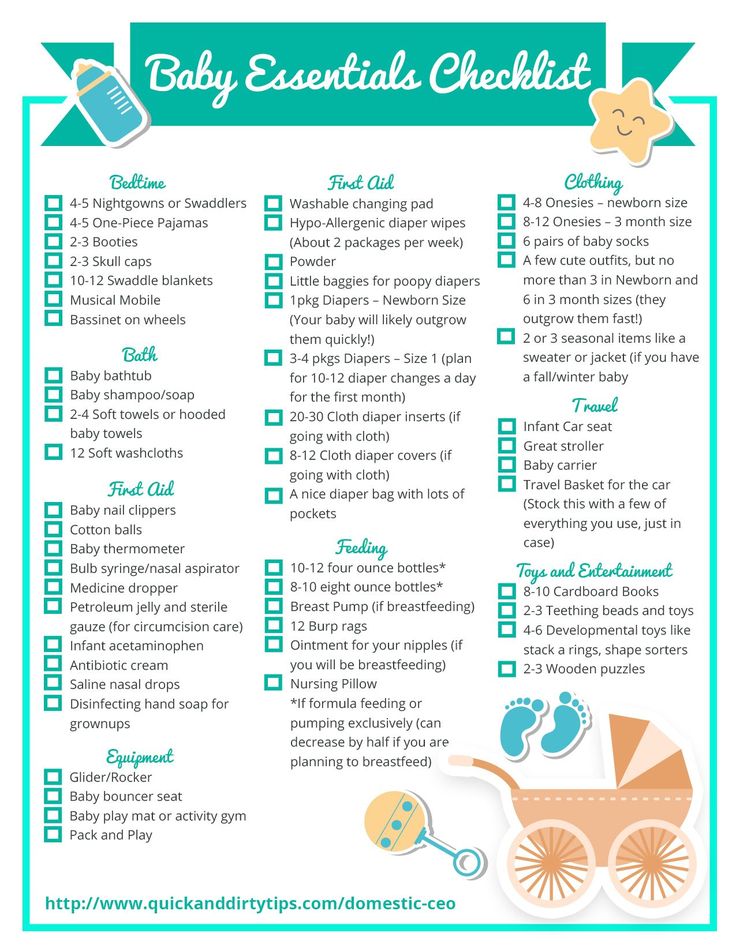
3. Baby Spoons
Baby spoons can be introduced at six months when you start your baby on semi-solids. At this age, their hand-eye coordination isn’t fully developed, and they’ll need your help.
However, as they grow older, learning to use spoons means successfully scaling a developmental milestone. In the meantime, your baby can be given easy-to-grasp spoons to practice with, or even chew on while teething. Platinum silicone utensils are especially recommended for safety reasons.
Although you may not necessarily use spoons immediately when you start your baby on solids – particularly if you are practicing baby-led weaning – these are handy to have in your mealtime arsenal.
4. Bowls and Serving Dishes
When your baby starts solids, you shouldn’t simply provide them with a tray laden with food.
Bowls and serving dishes help you keep an eye on portion sizes. Remember that your baby still gets most of their nutrients from breastmilk at this stage and their solid food intake is meant to be supplementary.
If you are doing baby-led weaning, serving dishes help minimize the mess. Babies are less likely to swipe from side to side when their food is in a bowl.
Bamboo dinnerware set by CINK
Our current favorite is CINK bamboo dinnerware, as they are the perfect size for meals or snacks and are very easy to clean. The Dinnerware set comes with a bowl, a sippy cup and a feeding spoon (you can also grab a matching set of plates too).
5. Baby Drinking Cups
Part of your baby’s transition to solid foods involves learning to use cups. Introducing safe cups to your baby is also an effective method to wean them off bottlefeeding.
Stainless steel cup by Cupkin ($26.82 for a set of 2 cups)
We love the stainless steel Cupkin cups as they are super well-made, do not chip and are available in a wide range of colors.
When you expose your baby to a variety of cup types, you’re encouraging optimal oral motor skill development in your child. Baby drinking cups help your baby exercise the soft palate, tongue, and facial muscles – jaw and lips.
Baby drinking cups help your baby exercise the soft palate, tongue, and facial muscles – jaw and lips.
Teaching your child to use a cup takes patience, expect a lot of drips and spills at first. It gets better as they get used to the process.
6. Portion and Freeze
Baby food should be stored in properly designated containers once your baby starts solids. If you make baby food in bulk, remember to store anything that won’t be consumed within the next 48 hours in the freezer. Everything else that you expect to be eaten within this period can be safely stored in the refrigerator and reheated as needed.
Freezer tray with lid by NUK ($7.49)
Some healthy storage options for baby food include:
- Ice cube trays for liquids and semi-solids
- Airtight glass containers
- Silicone freezer trays
- Silicone muffin cups
- Freezer-safe jars
You can thaw frozen baby food using:
-
Submersion method: Placing the storage container inside a larger bowl filled with hot water to warm it up.

-
Stovetop: Warming the food in a small saucepan on low heat.
-
Refrigerator: Transferring frozen food to the refrigerator to thaw slowly. This may take up to 12 hours to defrost, so plan ahead of time.
-
Microwave: Warming the thawed food in a glass bowl using a microwave. Remember to reduce the microwave to 50% power, warm the food in 15 minutes increments, and never reheat in pouches or plastic containers.
7. Placemats
Even when your baby is properly bibbed, starting solid foods will be a messy process before it gets better. Despite your best efforts, some of the meal may miss its mark and end up on the table. This is even more likely if you are practicing baby-led weaning.
Silicone place mat by Nightingale ($15)
Silicone placemats are easy to clean and keep the mess contained. When you use these, you can even pick up table food that’s still clean enough for your baby to eat. These placemats lay perfectly against highchair trays and help your baby transition to open tables.
These placemats lay perfectly against highchair trays and help your baby transition to open tables.
8. Silicone Straws
Silicone strawsare a preferred alternative to sippy cups. They protect your baby’s gums and teeth from chipping.
Silicone straws by Nightingale ($12)
Once your baby starts solids and can suck/lick food off their fingers, they are ready to learn to drink from a straw. You can help your baby adjust to having a straw in their mouth by dipping one end of the straw in their favorite food and putting it in their mouth. They will reflexively suck on the straw after a few seconds.
Silicone straws are bendable, so your baby can drink without tilting the cup, thereby preventing spillage. They are also safe for the environment.
Shop Safe, Essential Children Products with Nightingale
With the amount of toxins found in everyday items, making sure to purchase safe products for your baby is even more crucial than ever.
Nightingale prides itself on producing the highest quality baby items. Our products are practical, durable, and versatile. We want only the best for your baby’s delicate skin, and as parents, we solely offer products that we’ll be happy to use on our own children.
Our products are practical, durable, and versatile. We want only the best for your baby’s delicate skin, and as parents, we solely offer products that we’ll be happy to use on our own children.
Are you starting your baby on solid foods? Explore our collection of mealtime must-haves or contact us to let us know what you need, and we’ll be happy to provide some suggestions for you on some of the tips that has helped us over the years.
Termination of breastfeeding | Stopping breastfeeding
When is it time to stop breastfeeding and what is the best way to do it? Read our article for useful practical tips on weaning.
Share this information
How long should breastfeeding continue? Three months? Six? Year? Or maybe a few years?
The World Health Organization (WHO) and other authorities recommend that infants be exclusively breastfed for the first six months and then continue to be breastfed along with other foods (complementary foods) for at least two years. 1
The fact is that breast milk is not just food. It is a natural sedative if the child is anxious or tired. In addition, milk contains immune-boosting components, the amount of which increases dramatically when the baby gets sick. 2
According to anthropologists, the natural age of a person to stop breastfeeding is even more than two years. Given factors such as tooth development, body weight, comparison with other primates, and historical evidence, some scientists believe that breastfeeding may last up to two to four years. A number of researchers even believe that our ancestors breastfed children up to six or seven years of age. 3
Today, more than 60% of mothers in developed countries start giving their babies formula or complementary foods before six months of age, 4 although WHO does not recommend this.
When is it time to stop breastfeeding?
Weaning means that you gradually stop breastfeeding your baby. Ideally, the first step in this process is the gradual introduction of complementary foods, starting at about six months of age. In this case, breastfeeding continues. The weaning process continues until the mother's milk has been completely replaced by other foods and drinks.
“After six months, the baby needs higher doses of some nutrients, such as iron, zinc, vitamins B and D, that he cannot get from breast milk or from his own reserves,” says Sarah Beeson, health visitor from Great Britain.
“But solid food should at first only supplement the main diet with breast milk and gradually replace it. Mother's milk remains the main source of nutrition for the baby for many months to come.”
On average, a seven-month-old baby gets 93% of its calories from breast milk. And even between the 11th and 16th months, milk provides him with about half of the daily calorie intake. 5
“Sometimes moms think that breastmilk isn't that important once a baby has started solid foods, but the truth is, no matter how many months old a baby is, there's nothing better than your milk,” continues Sarah.
In fact, the process of finishing breastfeeding can take as long as mother and baby want. “When to stop breastfeeding is up to you,” says Sarah. The only thing that matters is what you think is right for you and your child.”
How to wean
Whenever you decide to start weaning your baby, it's best to do it gradually. An abrupt cessation of breastfeeding can lead to lactostasis, blockage of the milk ducts and mastitis, and in a child such a sudden change can adversely affect the state of the digestive and immune systems. In addition, it will be difficult for both of you psychologically.
When should I stop breastfeeding?
Sometimes mothers mistakenly believe that it is time to stop breastfeeding, when in fact there is no reason to. If you're returning to work, breastfeeding can be a great way to stay close to your baby during this difficult time for both of you. You can express milk at work, and morning and evening feeding sessions will give you the opportunity to spend time alone with your baby. If you need to leave without your baby, you can also express milk and bring or send it home.
If you need to leave without your baby, you can also express milk and bring or send it home.
If you get sick, this is not always a reason to stop breastfeeding. Read our advice in the article on breastfeeding when sick and consult with your healthcare professional.
Weaning up to six months
If you cannot continue breastfeeding until six months and want to try weaning your baby, start by replacing one feeding a day with a bottle of formula.
“It's best to start with midday feedings. Babies are very alert and able to smell breast milk nearby, so ask your partner or relative to give your baby a bottle when you're in the other room,” Sarah advises.
“Be hygienic when preparing meals. Be prepared for the fact that the baby will take fewer servings of expressed milk per day than if he was fed directly from the breast. Don't make him eat more milk than he wants."
You will probably feel that your breasts are fuller and more tender. This is due to the fact that your body is rebuilding to produce less milk. If this creates discomfort, try expressing some milk—just enough to relieve the discomfort without stimulating extra production.
This is due to the fact that your body is rebuilding to produce less milk. If this creates discomfort, try expressing some milk—just enough to relieve the discomfort without stimulating extra production.
When your body adjusts to the new volume - usually within a few days - replace with formula for one more meal a day. Continue this until you have changed all feedings and your baby is completely weaned.
“I had complications after my first birth, as a result I lost a lot of weight very quickly, and besides, I developed mastitis. Lactation was very weak, and at three months I was forced to stop breastfeeding,” recalls Jennifer, a mother of two from the UK, “I gradually replaced one feeding, so physically it was easy, but mentally it was hard for me.”
If you want to maintain closeness with your baby and all the health benefits of breastfeeding, but still need to cut down on breastfeeding, try partial weaning, replacing only a few feeds a day with formula.
Weaning after six months
Once your baby starts eating solid foods (about six months old), you will notice that breastfeeding naturally occurs less and less. For a year, it can be reduced to just a couple of times a day, and feedings will be replaced by full meals and healthy snacks.
For a year, it can be reduced to just a couple of times a day, and feedings will be replaced by full meals and healthy snacks.
Anyway, if you intend to continue to reduce breastfeeding, do it gradually, replacing one feeding at a time. Use formula milk if your baby is under 12 months old. With cow's milk, you should wait at least up to a year.
“When I decided to wean my son, I breastfed him three times a day and gave him other foods three times plus light snacks. Gradually, I replaced all breastfeedings with formula. By 11 months, we only had one nighttime breastfeed left,” says Ruth, a UK mom.
There are various ways to distract a child from changes in his diet. Some mothers suggest that instead of breastfeeding something to drink and eat together to maintain a sense of closeness. You can also change your daily routine, play your favorite game, or replace feeding with caresses - from you or from your partner. Some children take longer to get used to the new food, but in the end everything falls into place. If you are having difficulty weaning, ask your healthcare provider for advice.
If you are having difficulty weaning, ask your healthcare provider for advice.
Ending breastfeeding naturally
Ending breastfeeding can be guided by the baby's wishes. This is called baby-initiated weaning, or the natural termination of breastfeeding. Such a process is likely to be long and gradual. Month after month, the feeding sessions will become shorter and less frequent, until one day the child completely loses interest in the breast.
“My daughter stopped breastfeeding on her own when she was four years old,” says Sarah, a mother from the UK. And once, when we were on vacation, she seemed to just forget about her breasts. Now, six months later, she sometimes still asks for breasts, but she already knows that there is no milk there.
You will have a huge amount of time for the body to adapt, so there should be no discomfort and swelling of the breast. However, you may find it difficult emotionally, so spend more time petting and bonding with your baby.
“Child-initiated termination of breastfeeding was right in my case because I never gave my son formula or a bottle. I didn’t want to abruptly stop feeding and refuse him,” recalls Kelly, a mother from the UK, “He himself lost interest in breasts at the age of two and a half years. For us, it was the best scenario, although emotionally it was not very easy for me.”
What if you need to stop breastfeeding quickly?
It is best not to stop breastfeeding abruptly, but sometimes it is necessary for medical reasons or because you cannot be near the baby.
If you have been breastfeeding your baby up to this point, you will most likely have to express your milk to avoid breast swelling. Some mothers prefer to use a breast pump for this, others find it easier to express milk manually. You only need to pump a little, just to eliminate the discomfort, otherwise your body will take it as a signal to produce more milk.
At first, the breasts may swell and become tender, but this will pass. Breast milk contains a so-called feedback lactation inhibitor. When breastfeeding is stopped, this inhibitor tells your body to slow down milk production, but it can take days or even weeks for your breasts to rebuild.
Breast milk contains a so-called feedback lactation inhibitor. When breastfeeding is stopped, this inhibitor tells your body to slow down milk production, but it can take days or even weeks for your breasts to rebuild.
Certain medications can relieve pain and should be discussed with your doctor. Always follow your pharmacist's instructions or directions, and consult your healthcare professional before taking any medication.
“I had to abruptly stop breastfeeding when my daughter was eight months old because she had to take strong painkillers,” says Peggy, a mother from Switzerland. “It was very difficult because the baby was constantly looking for a breast and crying. I held her tightly to me as I gave her a bottle. This calmed her, and after a month everything was all right.
Can I continue breastfeeding if I want to get pregnant again?
Breastfeeding is a natural contraceptive. However, this method is not the most reliable, especially after six months or if you are not exclusively breastfeeding. This means that you can get pregnant even while you are breastfeeding.
This means that you can get pregnant even while you are breastfeeding.
Pregnant and breastfeeding mothers sometimes receive conflicting advice about whether to stop breastfeeding. Consistent feeding of two children of different ages is of course possible, and with the advent of the second baby, your body will produce the kind of milk that both of them need.
It is not uncommon for an older child to refuse to breastfeed or skip feedings if the mother is pregnant. This may be due to changes in milk composition that occur during pregnancy. Milk can change the taste and become less sweet. 6 If your baby is under one year of age when he starts to stop breastfeeding, make sure he continues to gain weight.
Talk to your doctor if you want to continue breastfeeding during pregnancy, but have had a preterm birth or miscarriage, or have any bleeding in the past.
If you need medical help to conceive, certain drugs and procedures may not be suitable while you are breastfeeding.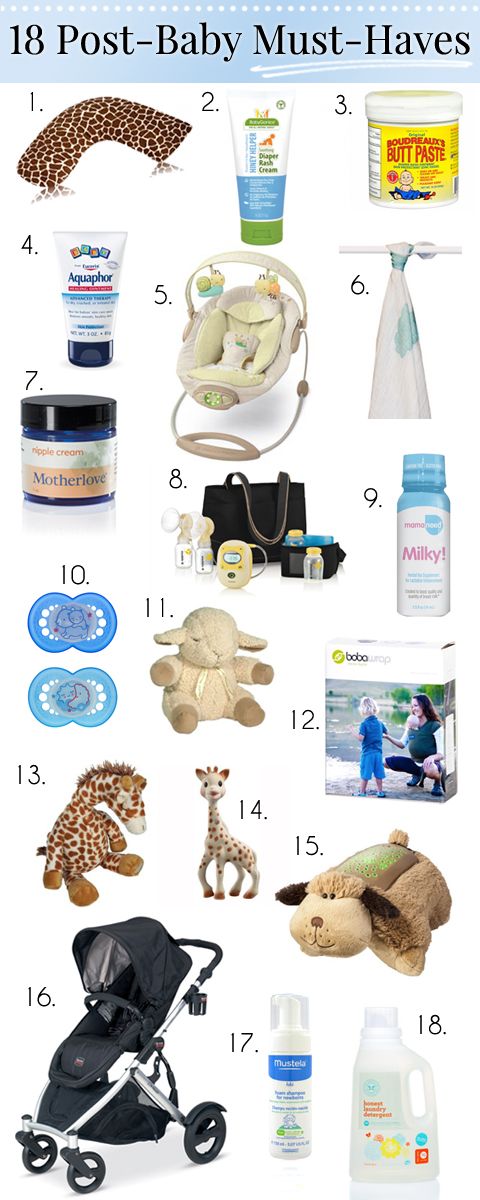 Discuss all possible options before deciding to stop breastfeeding.
Discuss all possible options before deciding to stop breastfeeding.
And finally...
Whenever you decide to end breastfeeding, and whatever method you choose to do so, be kind to yourself and your baby. This is a huge change for both of you physically, hormonally, and emotionally, so proceed thoughtfully and carefully.
“Although my body responded normally to stopping breastfeeding, it was psychologically difficult for me. The thing that united us for so long is over, - Jane, a mother of two children from the USA, shares her impressions, - I worked long hours, five days a week, and breastfeeding made me feel that I occupy a special place in the lives of children. But when it stopped, we soon found other ways to be together.”
Literature
1 World Health Organization. [Internet] Health Topics: Breastfeeding: 2018 [Accessed: 02/08/2018]. Available from : http://www.who.int/topics/breastfeeding/en - World Health Organization.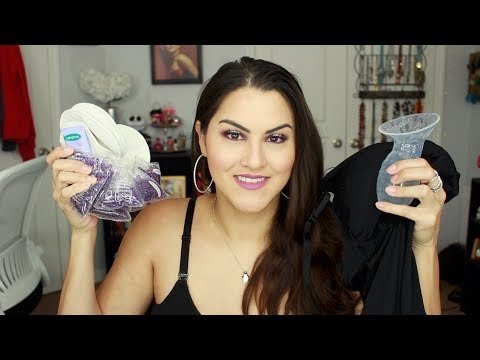 "Health Issues: Breastfeeding" [Internet]. Geneva, Switzerland: WHO; 2018 [Visit 02/08/2018]. Article linked: http://www.who.int/topics/breastfeeding/e
"Health Issues: Breastfeeding" [Internet]. Geneva, Switzerland: WHO; 2018 [Visit 02/08/2018]. Article linked: http://www.who.int/topics/breastfeeding/e
2 Hassiotou et al. Maternal and infant infections stimulate a rapid leukocyte response in breastmilk. Clin Transl Immunology. 2013;2(4): e 3. - Hassiot F. et al., "Infectious diseases of the mother and child stimulate a rapid leukocyte reaction in breast milk." Clean Transl Immunology. 2013;2(4):e3.
3 Dettwyler KA. When to wean: biological versus cultural perspectives. Clin Obstet Gynecol . 2004; 47(3)712-723. - Dettwiler KA, "Time to wean: weaning from a biological and cultural point of view". Klin Obstet Ginekol (Clinical obstetrics and gynecology). 2004; 47(3):712-723.
4 Victora CG Breastfeeding in the 21st century: epidemiology, mechanisms, and lifelong effect. Lancet. 2016;387(10017):475-490. - Victor S.J. et al., "Breastfeeding in the 21st century: epidemiology, mechanisms and long-term effects". Lancet 2016;387(10017):475-490.
Lancet. 2016;387(10017):475-490. - Victor S.J. et al., "Breastfeeding in the 21st century: epidemiology, mechanisms and long-term effects". Lancet 2016;387(10017):475-490.
5 Dewey KG et al. Breast milk volume and composition during late lactation (7-20 months). J Pediatr Gastroenterol Nutr . 1984;3(5):713-720. — Dewey C.G. et al., "Amount and composition of breast milk in late lactation (7-20 months)". F Pediatrician Gastroenterol Nutr. 1984;3(5):713-720.
6 Prosser CG et al. Mammary gland function during gradual weaning and early gestation in women. Aust J Exp Biol Med 9021 9029 Sci. 1984;62( Pt 2):215-228. - Prosser S.G. et al., "Breast Function During Gradual Weaning and Early Gestation." Aust J Exp Biol Med Sai. 1984;62( Pt 2):215-228.
1984;62( Pt 2):215-228.
Breastfeeding a newborn | What to Expect in the First Week
The first week of a baby's life is a wonderful but hectic time, especially if you haven't breastfed before. Our breastfeeding tips will help you settle in as quickly as possible
Share this information
The first time after childbirth, mothers are often confused. The body is still recovering, and you are already starting to get to know your newborn baby. The emotional state during this period can be unstable, especially between the second and fifth day, when many women have milk 1 and at the same time postpartum depression begins 2 . In addition, people around often expect (and demand) that a woman come to her senses as soon as possible and become a “super mom”. But the best thing to do this first week is just to be with your baby and get breastfeeding going.
When should I start breastfeeding my newborn?
Try to breastfeed your baby within the first hour after birth. When the baby latch onto the breast and begins sucking rhythmically, it stimulates the mammary gland cells and starts milk production. 1 It is not for nothing that this time is called the “magic hour”!
When the baby latch onto the breast and begins sucking rhythmically, it stimulates the mammary gland cells and starts milk production. 1 It is not for nothing that this time is called the “magic hour”!
“Ideally, the baby should be placed on the mother's stomach immediately after birth so that it can immediately attach to the breast. He won't necessarily eat, but he should be able to,” explains Cathy Garbin, an internationally recognized expert on breastfeeding.
“Hold your baby and let him find the breast on his own and put the nipple in his mouth. This is called the breast-seeking reflex. On the Internet you can watch videos that show what this process looks like. If the baby does not latch onto the nipple on its own, the midwife will help to properly attach it to the breast. But for starters, it’s good to give the baby the opportunity to do it on their own. In this case, the optimal position for the mother is reclining. ”
Don't spend that special first hour of your baby's life weighing and swaddling—or at least wait until he's suckling for the first time. Enjoy hugs and close skin-to-skin contact. This promotes the production of oxytocin, the hormone of love, in you and your baby, and oxytocin plays a key role in the supply of the first breast milk - colostrum. 3
Enjoy hugs and close skin-to-skin contact. This promotes the production of oxytocin, the hormone of love, in you and your baby, and oxytocin plays a key role in the supply of the first breast milk - colostrum. 3
“As soon as the obstetricians were convinced that our son was healthy, the three of us — me, my husband and our baby — were left to give us the opportunity to get to know each other. It was a very special hour - an hour of awkwardness, turbulent emotions and bliss. During this time, I breastfed my son twice, ”recalls Ellie, a mother of two from the UK.
Did you know that breastfeeding helps to recover after childbirth? This is because oxytocin stimulates uterine contractions. In the first hours after childbirth, this contributes to the natural release of the placenta and reduces blood loss. 4
What to do if the birth did not go according to plan?
If you had a caesarean section or other complications during childbirth,
You can still establish skin-to-skin contact with your baby and breastfeed him in the first hours after birth.
“If you can't hold your baby, have your partner do it for you and make skin-to-skin contact with the baby. This will give the baby a sense of security, care and warmth so that he can hold on until you recover, ”Katie advises.
If the baby is unable to breastfeed, it is advisable to start expressing milk as early as possible and do so as often as possible until the baby is able to feed on its own. “While breastfeeding in the first hours after birth lays an excellent foundation for the future, it is not so important,” Cathy reassures. “It is much more important to start lactation so that in the future, if necessary, you can start breastfeeding.”
To start milk production, you can express milk manually or use a breast pump that can be given to you at the hospital. 5 And with expressed precious colostrum, you can feed your baby. This is especially important if the baby was born premature or weak, since breast milk is extremely healthy.
If a baby was born prematurely or has a medical condition and cannot be breastfed immediately, this is no reason not to continue breastfeeding. “I have worked with many new mothers who were unable to breastfeed their baby for the first six weeks due to preterm labor or other reasons. Nevertheless, all of them later successfully switched to breastfeeding,” says Kathy.
“I have worked with many new mothers who were unable to breastfeed their baby for the first six weeks due to preterm labor or other reasons. Nevertheless, all of them later successfully switched to breastfeeding,” says Kathy.
Does the baby latch on correctly?
Correct breastfeeding is essential for successful breastfeeding 6 , as it determines how effectively the baby will suckle milk and hence grow and develop. Latching on the breast incorrectly can cause sore or damaged nipples, so don't hesitate to ask your healthcare provider to check that your baby is properly attached to the breast, even if you are told that everything is fine and you do not see obvious problems - especially while you are in the hospital.
“While I was in the hospital, I called the doctor at every feed and asked me to check if I was breastfeeding correctly,” says Emma, mother of two from Australia. - There were several cases when it seemed to me that everything seemed to be right, but it was painful to feed, and the doctor helped me take the baby off the breast and attach it correctly. By the time I was discharged, I had already learned to do it confidently.”
By the time I was discharged, I had already learned to do it confidently.”
When applying to the breast, point the nipple towards the palate. This will allow the baby to take the nipple and part of the areola under it into their mouth. It will be easier for him to suck if he has both the nipple and part of the areola around in his mouth. 6
“When a baby latch on properly, it doesn't cause discomfort and it causes a pulling sensation, not pain,” Cathy explains. - The baby's mouth is wide open, the lower lip may be slightly turned outward, and the upper one lies comfortably on the chest. The body language of the child indicates that he is comfortable. There isn't much milk at this early stage, so you probably won't notice your baby swallowing, but he will suckle a lot and nurse frequently."
How often should a newborn be fed?
The frequency and duration of breastfeeding in the first week can vary greatly. “The first 24 hours of life are completely different for different children. Someone sleeps a lot (after all, childbirth is tiring!), And someone often eats, says Katie. - Such a variety greatly confuses young mothers. Everyone gives different advice, so it's important to remember that every mother and child is different."
Someone sleeps a lot (after all, childbirth is tiring!), And someone often eats, says Katie. - Such a variety greatly confuses young mothers. Everyone gives different advice, so it's important to remember that every mother and child is different."
“Colostrum is thicker than mature breast milk and is produced in smaller amounts, but has many benefits. When the baby eats colostrum, he learns to suck, swallow and breathe until milk begins to flow in more volume, ”explains Cathy.
Milk usually arrives on the second or fourth day after delivery. Until this time, the baby is applied to the breast 8–12 times a day (and sometimes more often!), including at night. 7 Feeding may last 10-15 minutes at this stage, or 45 minutes or even an hour, as the baby is just beginning to develop the muscles and coordination needed to suckle effectively.
“At first, the intensity of feeding is very high, often higher than many people realize, and this is shocking to most new mothers,” says Cathy.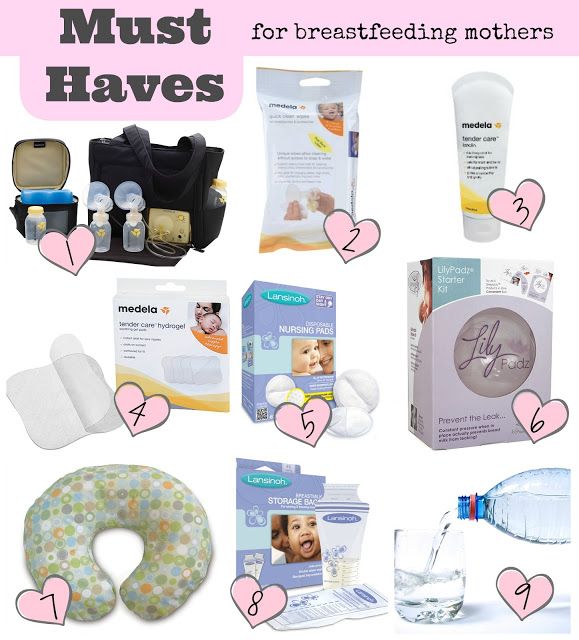 - Sometimes mom has no time to go to the toilet, take a shower and have a snack. It usually comes as a surprise."
- Sometimes mom has no time to go to the toilet, take a shower and have a snack. It usually comes as a surprise."
Camille, a mother from Australia, experienced this. “For the first week, Frankie ate every two hours, day and night, and each time it took half an hour to an hour to feed,” she recalls. “My husband and I were completely exhausted!”
Do I need to feed my newborn on a schedule?
The good news is that frequent feeding promotes lactation and stimulates milk production. 7 The more your baby eats, the more milk you will have. Therefore, forget about feeding your newborn on a schedule - this way he will have less chance of feeding. Try to feed your baby when he signals that he is hungry 8 :
- tossing and turning in her sleep;
- opens eyes;
- turns its head if it feels a touch on its cheek;
- sticks out his tongue;
- groans;
- licks lips;
- sucks fingers;
- is naughty;
- whimpers;
- is crying.

Crying is the last sign of hunger, so when in doubt, just offer your baby the breast. If he bursts into tears, it will be more difficult to feed him, especially at first, when both of you are just learning how to do it. As your baby grows, he will likely eat less frequently and take less time to feed, so breastfeeding will seem more predictable.
Does breastfeeding hurt?
You may have heard that breastfeeding is not painful at all, but in fact, in the first days, many new mothers experience discomfort. And this is not at all surprising, given that the nipples are not used to such frequent and strong sucking.
“Breastfeeding can be uncomfortable for the first couple of days – your body and your baby are just getting used to it. If a baby eats for too long and does not latch well, the sensations are almost the same as from unworn new shoes, Cathy compares. Just as tight shoes can rub your feet, improper suckling can damage your nipples. Prevention is always better than cure, so if the pain persists after a few days of feeding, contact a lactation consultant or healthcare professional.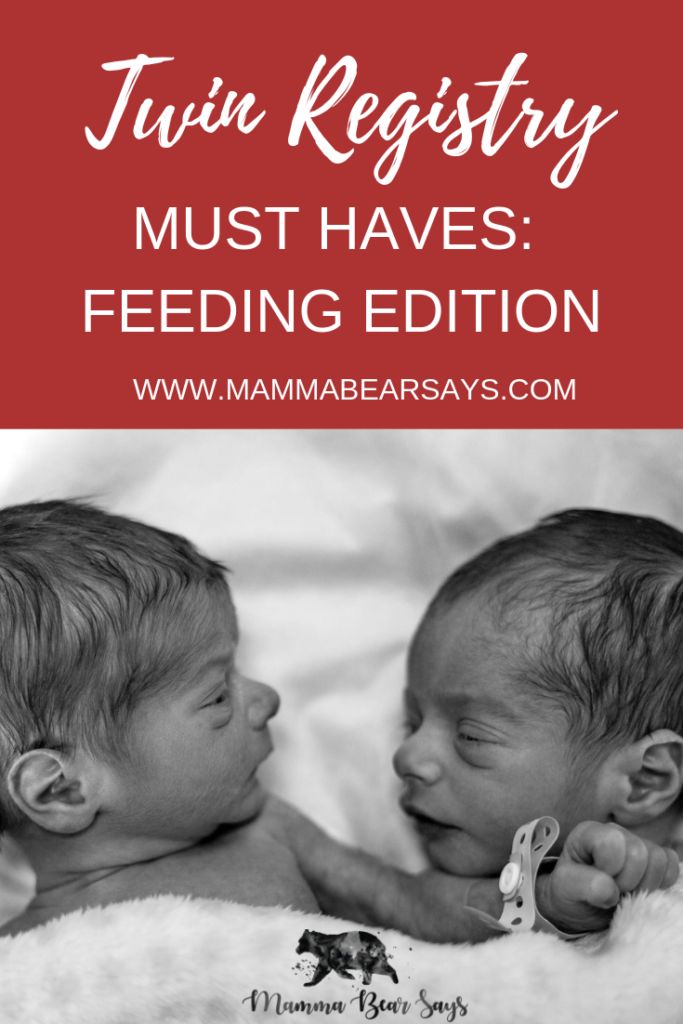 ”
”
Maria, a mother from Canada, agrees: “Although my son seemed to latch onto the breast well, he damaged his nipples while feeding, and I was in pain. As it turned out, the reason was a shortened frenulum of the tongue. The breastfeeding specialists at our city clinic have been of great help in diagnosis and treatment.”
In addition, you may experience period cramps during the first few days after breastfeeding, especially if this is not your first baby. This is the so-called postpartum pain. The fact is that oxytocin, which is released during breastfeeding, contributes to further contraction of the uterus to restore its normal size. 4
When milk arrives, the breasts usually become fuller, firmer and larger than before delivery. In some women, the breasts swell, harden and become very sensitive - swelling of the mammary glands occurs. 10 Frequent breastfeeding relieves these symptoms. For more breast care tips, read our article What is Breast Swelling?
How often does the newborn urinate and defecate?
What goes into the body must go back out. Colostrum
Colostrum
has a laxative effect, helping to eliminate meconium - the original feces. It looks a little scary - black and sticky, like tar. 11 But don't worry, it won't always be like this. Breastfed babies usually have a slightly sweet smell of stool.
How many times a day you will have to change diapers and what the contents should look like, see below.
Day one
- Frequency: once or more.
- Colour: greenish black.
- Texture: sticky like tar.
Day two
- Frequency: twice or more.
- Colour: dark greenish brown.
- Texture: less sticky.
Day three
- Frequency: twice or more.
- Colour: greenish brown to brownish yellow.
- Texture: non-sticky.
Fourth day and then the entire first month
- Frequency: twice or more.
- Color: yellow (feces should turn yellow no later than by the end of the fourth day).

- Texture: grainy (like mustard with grains interspersed). Leaky and watery.
The baby's urine should be light yellow. On average, babies urinate once a day for the first two days. Starting around the third day, the number of wet diapers increases to three, and from the fifth day onwards, diapers have to be changed five times a day or more often. In addition, during the first few days, the weight of wet diapers increases. 11
Is the baby getting enough breast milk?
Since very little milk is produced at first,
you may feel that your baby is not getting enough milk. But if you feed your baby on demand, you will produce exactly as much milk as he needs. If you want to keep the process under control, be guided by the frequency of diaper changes given above. If your baby soils less diapers, check with your doctor.
“For the first three or four weeks, most babies just eat and sleep. If the child is worried and constantly asks for a breast, you should consult with your doctor, ”recommends Katie.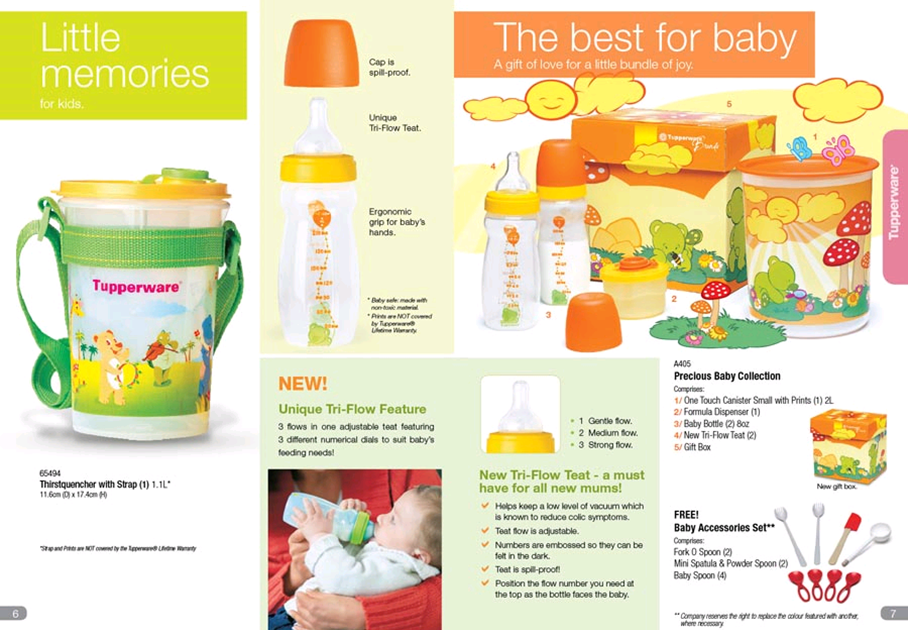
Sometimes the baby may vomit after feeding. If the vomit is the color of milk, this is not a cause for concern. But if there are orange, red, green, brown or black blotches in it, or the child vomits with a "fountain", consult a doctor. You should also consult a doctor if the baby has a high temperature, the fontanel (soft spot on the head) has sunk, blood is found in the stool, and also if the weight recorded at birth has not recovered within two weeks. 11
But if there are no frightening symptoms and the baby is growing at a normal pace, then he has enough milk. Soon you will both get used to breastfeeding and establish a more stable routine.
For the next step in breastfeeding, see Breastfeeding in the First Month: What to Expect.
Literature
1 Pang WW, Hartmann PE. Initiation of human lactation: secretory differentiation and secretory activation. J Mammary Gland Biol Neoplasia 2007;12(4):211-221. - Pang, W.W., Hartmann, P.I., "Lactation initiation in the lactating mother: secretory differentiation and secretory activation." G Mammary Gland Biol Neoplasia. 2007;12(4):211-221.
- Pang, W.W., Hartmann, P.I., "Lactation initiation in the lactating mother: secretory differentiation and secretory activation." G Mammary Gland Biol Neoplasia. 2007;12(4):211-221.
2 Shashi R et al. Postpartum psychiatric disorders: Early diagnosis and management. Indian J Psychiatry . 2015; 57( Suppl 2): S 216– S 221. - Shashi R. et al., Postnatal mental disorders: early diagnosis and treatment. Indian J Saikiatri. 2015; 57(App 2): S216-S221.
3 Moberg KU, Prime DK. Oxytocin effects in mothers and infants during breastfeeding. Infant . 2013;9(6):201-206. - Moberg K, Prime DK, "The effects of oxytocin on mother and child during breastfeeding." Infant. 2013;9(6):201-206.
4 Sobhy SI, Mohame NA. The effect of early initiation of breast feeding on the amount of vaginal blood loss during the fourth stage of labor.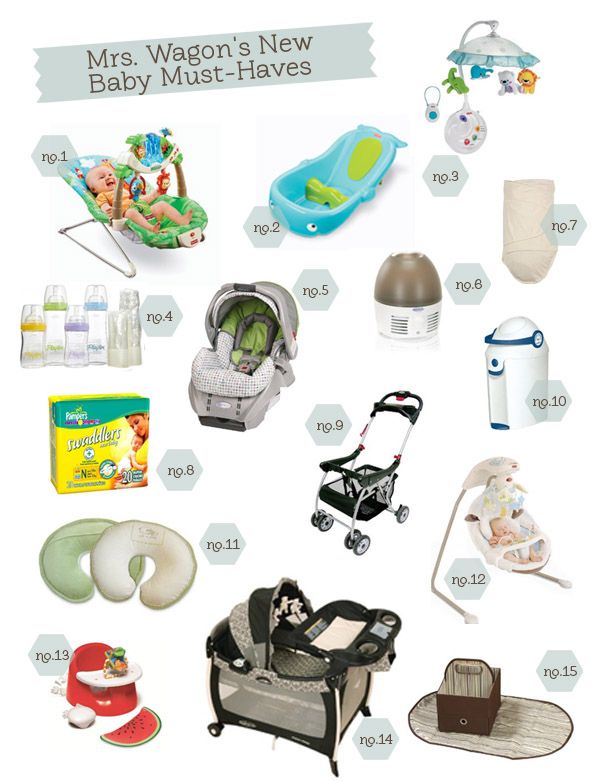 J Egypt Public Health Assoc . 2004;79(1-2):1-12. - Sobhi SI, Moham NA, "Early initiation of breastfeeding and its effect on vaginal bleeding in the fourth stage of labor." G Egypt Public Health Assoc. 2004;79(1-2):1-2.
J Egypt Public Health Assoc . 2004;79(1-2):1-12. - Sobhi SI, Moham NA, "Early initiation of breastfeeding and its effect on vaginal bleeding in the fourth stage of labor." G Egypt Public Health Assoc. 2004;79(1-2):1-2.
5 Meier PP et al. Which breast pump for which mother: an evidence-based approach to individualizing breast pump technology. J Perinatol . 2016;36(7):493. - Meyer P.P. et al., Breastpump Selection: A Scientific Approach to Customizing Pumping Technology. J Perinatol (Journal of Perinatology). 2016;36(7):493-499.
6 Cadwell K. Latching - On and Suckling of the Healthy Term Neonate: Breastfeeding Assessment. J Midwifery & Women ’ s Health . 2007;52(6):638-642. — Cadwell, K., "Latching and sucking in healthy newborns: evaluation of breastfeeding." F Midwifery Women Health. 2007;52(6):638-642.
— Cadwell, K., "Latching and sucking in healthy newborns: evaluation of breastfeeding." F Midwifery Women Health. 2007;52(6):638-642.
7 Kent JC et al. Principles for maintaining or increasing breast milk production. J Obstet , Gynecol , & Neonatal Nurs . 2012;41(1):114-121. - Kent J.S. et al., "Principles for Maintaining and Increasing Milk Production". J Obstet Ginecol Neoneutal Nurs. 2012;41(1):114-121.
8 Australian Breastfeeding Association [ Internet ]. Feeding cues ; 2017 Sep [ cited 2018 Feb ]. - Australian Breastfeeding Association [Internet], Feed Ready Signals; September 2017 [cited February 2018]
9 Jacobs A et al.





